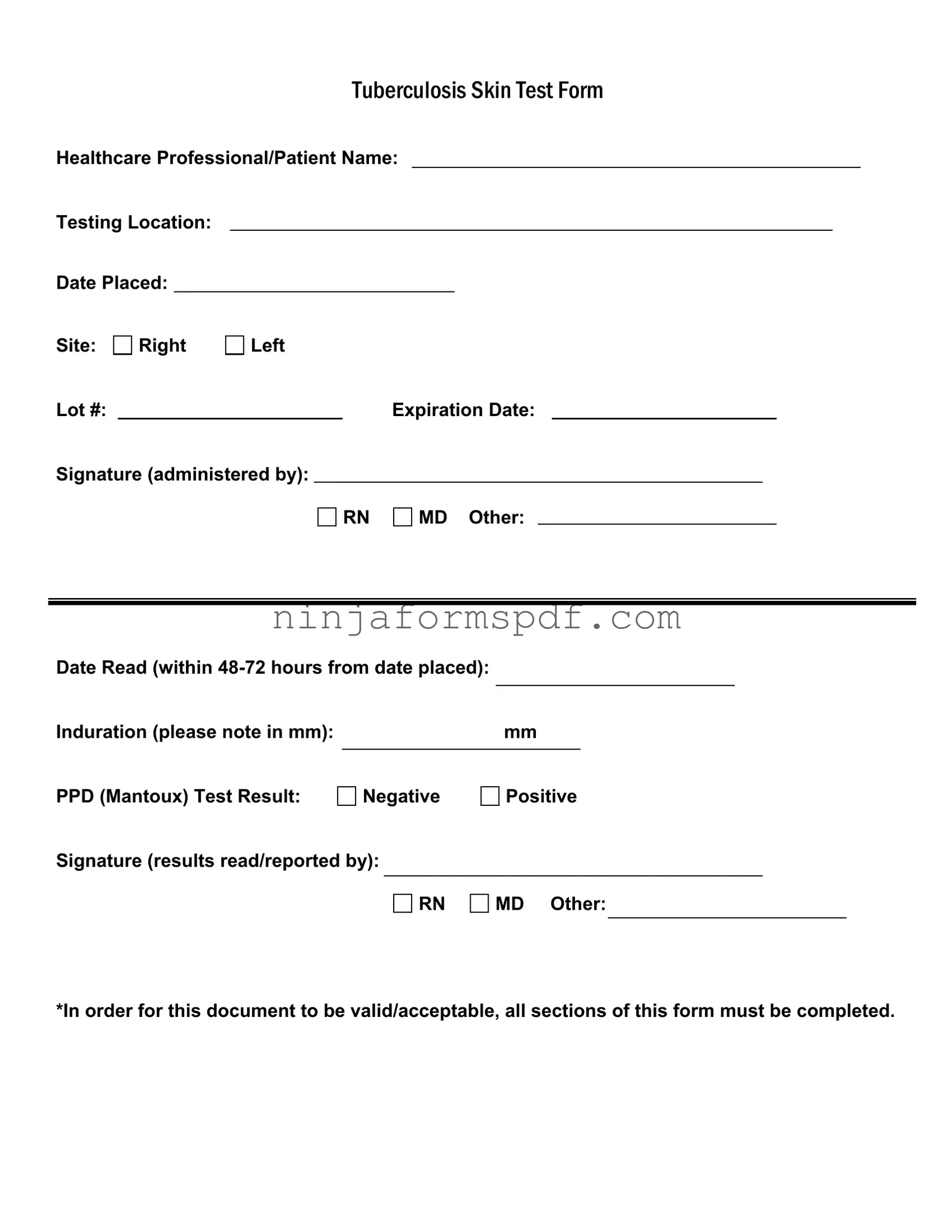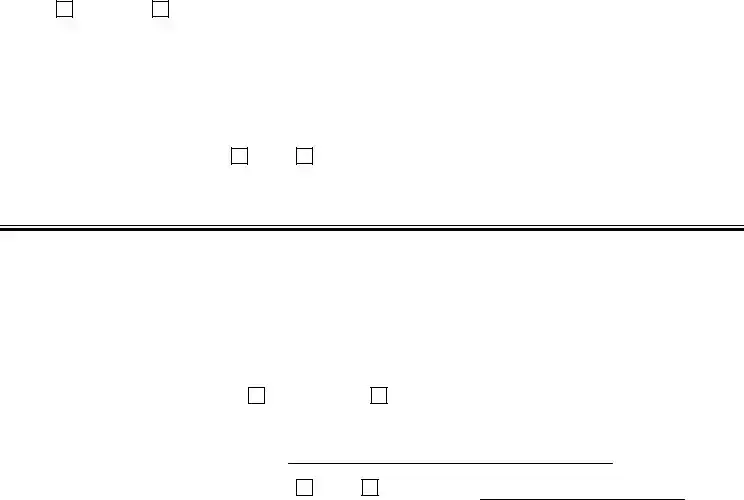What exactly is a TB test, and why is it important?
A TB test, formally known as the Tuberculosis Skin Test or Mantoux PPD test, is a method used to determine if someone has been infected with the tuberculosis bacteria. It's important because TB is a potentially serious infectious disease that primarily affects the lungs, but can also affect other parts of the body. By identifying infections early, treatment can start promptly, helping prevent the spread of TB.
What does the TB Skin Test Form include?
The TB Skin Test Form records vital information regarding the administration and reading of a TB test. It includes sections for the healthcare professional or patient name, testing location, the date the test was placed, the site of the test (right or left forearm), the lot number of the test equipment, expiration date of the test equipment, and signatures from the person administering the test and the person reading the results. Additionally, it requires documentation of the date the test was read (should be within 48-72 hours from when the test was placed) and the induration size in millimeters, which helps determine the result as negative or positive.
Who can administer and read the results of a TB test?
According to the TB Skin Test Form, the test can be administered by a Registered Nurse (RN), Medical Doctor (MD), or another qualified healthcare professional deemed capable of performing this procedure. Similarly, reading the results—which involves measuring the induration (swelling) at the site of the test—must also be conducted by a qualified individual, typically an RN, MD, or an appropriately trained healthcare professional.
Why must the test be read within 48-72 hours after being placed?
The timing for reading a TB test is crucial for accurate results. The immune system's reaction to the test material peaks between 48 to 72 hours after the test has been administered. Reading the test within this timeframe ensures the measurement of the induration is accurate. If read too early or too late, the results may not accurately reflect whether a person has been infected with TB.
What does it mean if the test result is positive?
A positive result on the TB Skin Test indicates that the person has been infected with the TB bacteria. It is important to note that a positive result doesn’t necessarily mean the person has active tuberculosis disease—only that they have been exposed to the bacteria at some point. Further testing, like a chest X-ray or a sputum test, is usually required to determine if someone has active TB disease and needs treatment.
Is the TB Skin Test Form valid if some sections are left incomplete?
No, the form specifies that in order for it to be considered valid and acceptable, all sections of the document must be completed. This thorough documentation ensures the test's integrity and reliability, providing clear, complete data for healthcare professionals to interpret the results and maintain accurate medical records.

